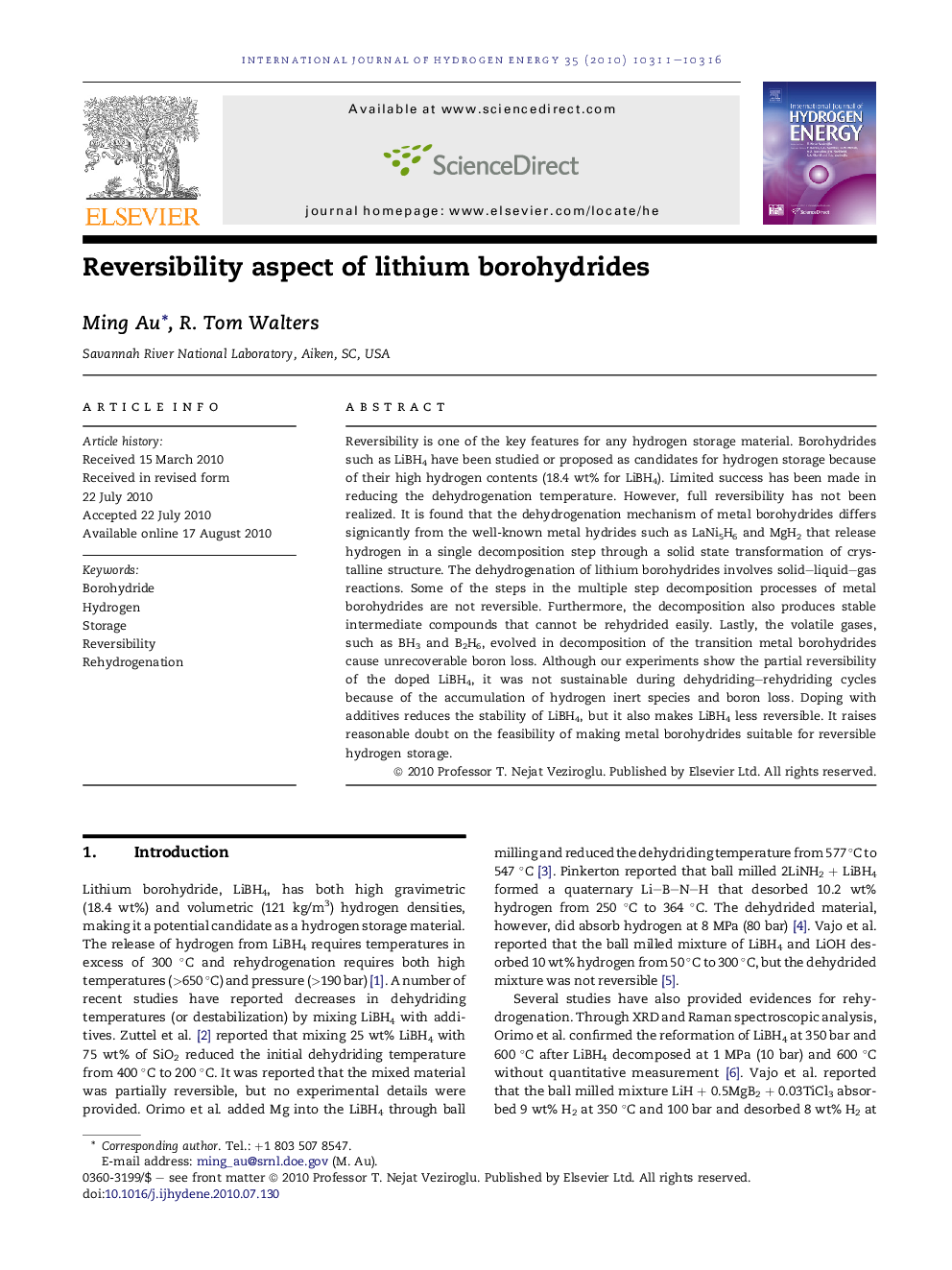| Article ID | Journal | Published Year | Pages | File Type |
|---|---|---|---|---|
| 1280085 | International Journal of Hydrogen Energy | 2010 | 6 Pages |
Reversibility is one of the key features for any hydrogen storage material. Borohydrides such as LiBH4 have been studied or proposed as candidates for hydrogen storage because of their high hydrogen contents (18.4 wt% for LiBH4). Limited success has been made in reducing the dehydrogenation temperature. However, full reversibility has not been realized. It is found that the dehydrogenation mechanism of metal borohydrides differs signicantly from the well-known metal hydrides such as LaNi5H6 and MgH2 that release hydrogen in a single decomposition step through a solid state transformation of crystalline structure. The dehydrogenation of lithium borohydrides involves solid–liquid–gas reactions. Some of the steps in the multiple step decomposition processes of metal borohydrides are not reversible. Furthermore, the decomposition also produces stable intermediate compounds that cannot be rehydrided easily. Lastly, the volatile gases, such as BH3 and B2H6, evolved in decomposition of the transition metal borohydrides cause unrecoverable boron loss. Although our experiments show the partial reversibility of the doped LiBH4, it was not sustainable during dehydriding–rehydriding cycles because of the accumulation of hydrogen inert species and boron loss. Doping with additives reduces the stability of LiBH4, but it also makes LiBH4 less reversible. It raises reasonable doubt on the feasibility of making metal borohydrides suitable for reversible hydrogen storage.
